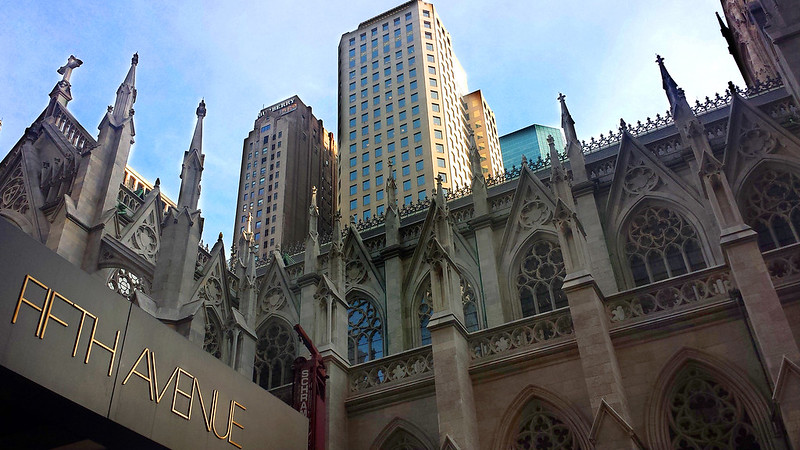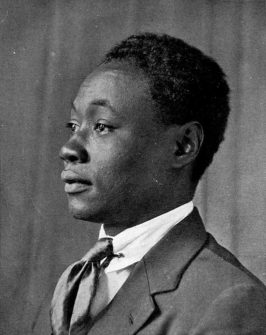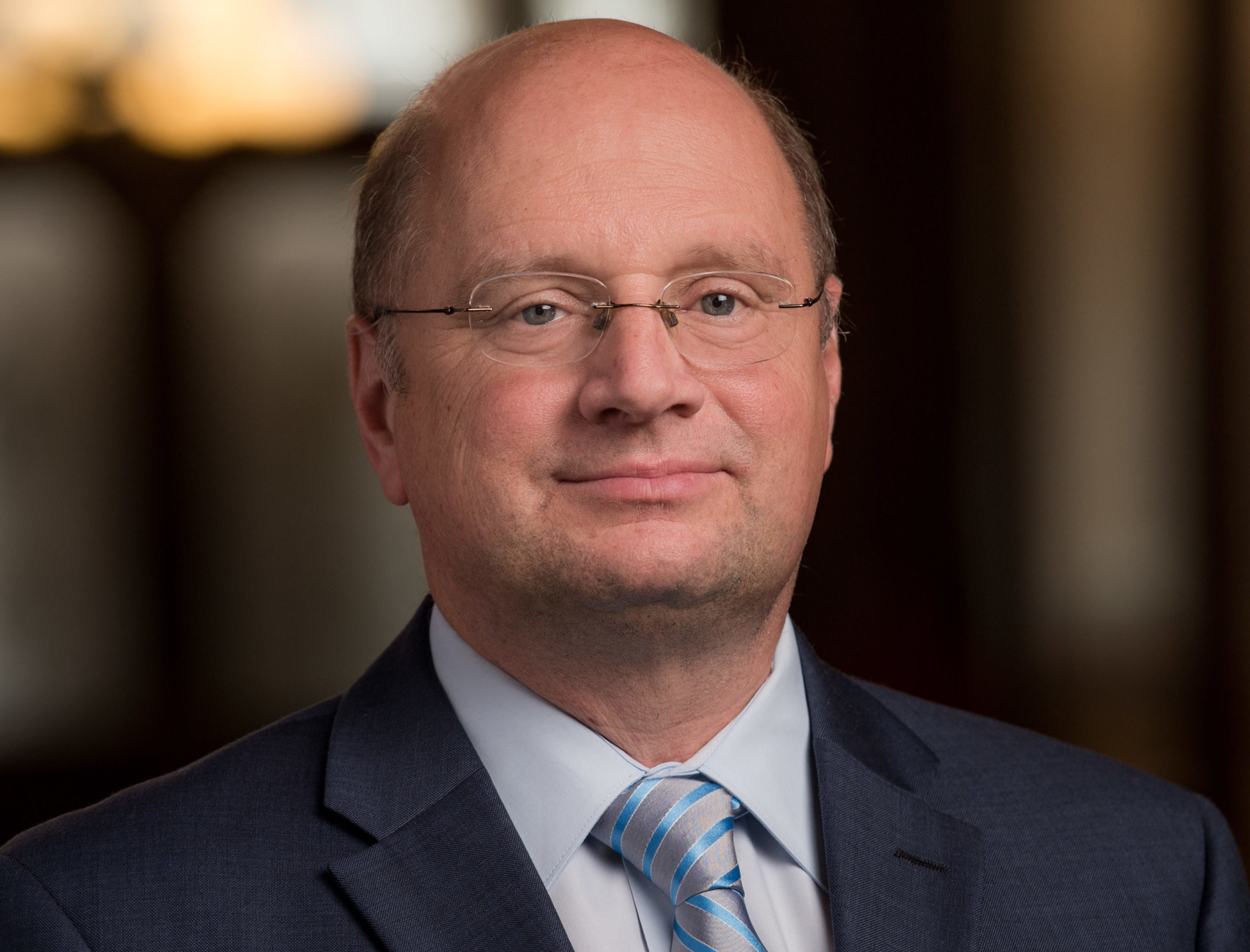
Brenna Moore’s rich and rewarding analysis of the far-flung network of “spiritual friends” who anticipated and helped shape the ressourcement—the movement for Christian renewal that emerged in the 1920s and 1930s among French Catholic theologians, historians and exegetes—is a painstakingly researched work of historical recovery and interpretation. With the exception of the French mystic, philosopher, and political activist Simone Weil and the neo-Thomist exponent of Christian humanism Jacques Maritain, the protagonists of Kindred Spirits—the distinguished Chilean poet Gabriela Mistral, the accomplished scholar of Medieval Christian mysticism Marie-Magdeleine Davy, the writer and catalyst of the Harlem Renaissance Claude McKay, the pioneering and yet inimitable Islamicist Louis Massignon—stand outside the circle of influential Catholic thinkers familiar to most American religious historians, not to mention students of modern Catholicism.
Yet the singular preoccupation of these institutional outsiders—their conceptualization and attempted enactment of the holy community as an inclusive, borderless spiritual fellowship of love—anticipated the retrieval of the Biblical model of the Church as a “mystical body” (endorsed in Pope Pius XII’s encyclical of 1943, Mystici Corporis Christi). In turn, their critique of “religious power” foreshadowed Catholicism’s decisive confrontation with secular modernity, which led to the Church’s accommodation of religious pluralism and to the abandonment of the long-held dream of establishing Roman Catholic states across the globe—these sea changes were ratified by the Second Vatican Council (1962–’65).
While Moore gestures toward a shared legacy of the “kindred spirits,” her focus is elsewhere. Accentuating her protagonists’ rejection of “the inherited ties of family, tradition and nation” in favor of a medieval and antimodern mode of belonging, Moore takes aim at the male clerics who narrowed Catholic theology in such a way as to authorize and reinforce their own institutional power (and who, until recently, dominated the historiography as well). The individuals profiled by Moore gravitated to the margins of this ecclesial arrangement. By situating her protagonists’ public careers and published works as well as their private and inner lives (as disclosed by their correspondences, diaries, memoirs, and fragments) in the context of their shared affinities, disagreements, and sometimes tenuous relationships with one another, Moore makes accessible their attempt at creating nouvelles familles spirituelles, a radically countercultural spiritual network. Strikingly, they deemed this “alternate mode of belonging” an appropriate response to the descent of European civilization into the darkness of racism and the chaos of war.
The book raises three meta-questions, each of which is telegraphed by its tantalizing subtitle: “Friendship and Resistance at the Edges of Modern Catholicism.” Moore’s way of dealing with these questions advances Contending Modernities’ exploration of how “identity” is constructed, contested, policed, and transformed under the shifting conditions of what we loosely refer to as “modernity.” While Moore focuses on religion, and Catholicism in particular, the story she tells of these boundary-dwelling thinkers underscores the necessity to resist facile reliance on gender, race, and nation as stable categories by which to understand the fluidity of the modern period and modern identities.
Grappling with Multiple Modernities
First, what do we mean by “modern”? Ah, modernity! Of the writing of essays, theses, tomes, blogs, and doggerel plumbing the depths—or the shallows, I begin to suspect—of our deployments of “the modern,” there seems no end. Alas: the more I read, the less I understand, and so I cling desperately to ready-at-hand conventions, whereby “modernity” signifies the condition of being modern, whatever that is, and “modernism” the distilled essence of the modern, raised or reduced to an aesthetic, a hermeneutical strategy, a political project, and/or a theological/philosophical cudgel. This formulation, of course, is completely inadequate.
Moore does little to clarify but much to complicate and perhaps (intentionally?) to confuse the question. In some passages the modern seems to refer to a historically specifiable period, and to events therein which helped to define that period as modern. Channeling scholars of African diasporic practices, for example, Moore ties the global circulation of ideas “in modernity” to “. . . the slave trade, the global history of the notion of race, and the making of transnational Black cultures all as key to the formation of the modern world” (234). Elsewhere modernity, the condition of being modern, is identified with certain (regrettable and recognizably American) cultural, social, and individual characteristics, such as “. . . the modern ideology of isolation that prioritizes the self-made man or woman, a bottled-up version of masculinity, and a world where we are better left alone, with our border sealed and gates locked, left to find pleasure in our own private family lives” (253). This connotative strategy becomes less useful when it takes on its own polemical and ideological shadings (e.g., “a bottled-up version of masculinity”) or when it specifies traits that do not seem distinctive to the modern period. (It is not clear, for example, how the medieval monks’ version of masculinity was, by comparison, uncorked.)

By contrast, relatively little attention is given to definitions and aspects of modernity pinned to the hubris of “modernization theory,” à la Weber and Parsons, which at the time correlated modernity with “development” driven by superior technical and scientific skill possessed by the “enlightened” West. Yet, this virulent intellectual strain reinforced the subjugation of supposedly benighted “pre-scientific” Black and Brown peoples, against which McKay, Mistral, Massignon, and other of the book’s protagonists railed. Their shared “resistance” against European imperial ambition, reductive materialism, the valorization of technocracy, and racialist theories underlying colonialism put them on the edges of modernity, in one accepted use of the term, and on the edges of modern Catholicism in its (soon to be contested) religious nationalist mode. And yet, their embrace of religious pluralism and celebration of Muslim, Hindu, Jewish, and indigenous artists, writers, poets, and scholars; rejection of the confessional state; and search for a middle way between the excesses of both capitalism and Soviet-era Marxism—these stances, too, were “modern,” and they prefigured Catholicism’s imminent theological and social transformations. Not least, our heroes “on the edges” did benefit from at least one dimension of “techno-scientific modernity,” namely, the enhanced travel and communication among exiled peoples scattered across the globe, a convenience which enabled the spiritual friends to advance “various modes of internationalist belonging.” (The idealization of medieval mysticism notwithstanding, none of them were sedentary monks.)
Moore’s reluctance to stand back from the reporting of her richly detailed research and her quasi-biographical method in order to probe and clarify the ideological options present in the modern world and available to her protagonists—a tangle of ideas and values, some of which resonated with and shaped their political and aesthetic sensibilities—leads to some confusing (which is not to say inaccurate) claims. Opposed to Nazism and European colonialism alike, her protagonists, we are told, were “anti-modernists but not fascists.” The implication is that anti-modernism is compatible with and might even lead to fascism. Depending on how one defines modernism and anti-modernism, that implication may be correct. On the other hand, if one hews to the (plausible) dictum that fascism is a quintessentially modern evil, the consequence of a sterile, inhumane rationality empowered by the destructive prowess of the modern war-making state, then anti-modernism of a sort would seem not to buttress fascism but rather to discredit its pernicious assumptions. (The conflation of theological, philosophical, and political expressions of modernism adds to the confusion.) In any case, Moore tends to invoke terms like “anti-modernism” without much attention to their divergent meanings.
Thankfully, Moore attempts no recondite terminological treatises on “the modern” and, to be fair, she engages the admittedly squishy zeitgeist throughout the narrative. Still, her subjects had a complicated and sometimes confusing relationship to modernity and to modernism. To take another example, much is made of the anti-family bias of the Maritains, Mistral, Davy, Weil, and (the married father) Massignon, and Moore seems to associate their preference for spiritual rather than carnal relationships with a form of neo-medievalism. One unexamined assumption supporting this reading is a presumed radical discontinuity between medieval and modern gender roles, with an implicit idealization of the former. Moore’s admirable honesty about the failures of her protagonists to live up to the ideals they articulated—she notes that Mistral, McKay and Weil, for example, could be frustratingly aloof, self-absorbed, and isolationist for long stretches—raises the question of whether they really preferred any kind of “friendship” or “bond of love” sufficiently thick to endure the passage of time and the distance of place. Given the fragility of the friendships over time, can we really conclude that they “offer a striking alternative to many of the ideas that prevail in our own time” (253)?
Examined in its disparate manifestations across decades and centuries, Modernity—the condition as well as the term—eludes the precision of a good definition and upsets expectations.
In short: Were these inescapably modern figures also counter-modernists, anti-modernists, neo-medievalists, all of the above? Or were they merely “on the edges”?
Examined in its disparate manifestations across decades and centuries, Modernity—the condition as well as the term—eludes the precision of a good definition and upsets expectations: modern people are practiced in the selective retrieval and recombination of scattered bits of identity and ideas originally embedded in a specific time and place. For this reason, we need not be surprised to find modern would-be monks inhabiting metropolises and universities, theologates and factories. Nor should we be surprised that celibate marriages like that of the Maritains existed alongside traditional sexual practices and gender roles. All of these kinds of options, and more, can be said to be “modern,” but of course that is insufficient if we are to understand the variation and continual contestation that marks the era. Just when we label something “modern,” we find ample alternative practices, lifestyles, and ideas which can also be said to constitute the modern world. Oh, the irony of it all!
The Political Implications of Spiritual Friendship
How are we to understand the relationship between political activism and spiritual friendship? Is “resistance” the residue of mystical experience or its very essence? How does holiness or perceived holiness shape power relations? Does “religious power” reverse or otherwise upend the experience and expectations of mundane political power?
Moore plants various clues to assist in solving such perennial puzzles. Describing the “spiritual power” of Massignon’s influence on Davy, she remarks that “. . .there has never been a time when intimacy between friends was possible in a context immune frow power and politics” (141). This is perhaps a cynical view, depending on whether “context” refers to interpersonal dynamics or rather to impersonal cultural currents. Moore seems to suggest that these two contexts are inseparable, given that the “. . . warmth of spiritually powerful friendship is no safe haven from other kinds of power, no magic circle protected from race, gender, and religious difference, but intimacy and friendship have their own specific religious power within these broader societal forces” (141). The sacred “is made real through the personal spheres of intimacy that happen always within, and alongside, the more diffuse networks of discursive and nondiscursive power” (142). One wishes for guidance as to what constitutes “religious power.”

Is love, even interpersonal love, incapable of transcending power politics? Perhaps—especially if Davy and other of the book’s “heroes,” as Moore calls them, attempted to channel their intensely personal and mystical love for one another into “the more diffuse networks of discursive and nondiscursive power” by which bureaucratic systems are reformed and the suffering masses liberated (142). In that case, love is reduced from care for the individual person to generalized concern for the abstract masses, and the movements for reform and houses of solidarity come and go, vulnerable to the shifting social trends and political currents of the day. And, indeed, this was the fate of many of the activist organizations and movements founded or embraced by the kindred spirits.
The “concrete mysticism” (my phrase) of Simone Weil, for example, was a self-conscious attempt to place the radical attentiveness of person-centered mystical love at the heart of social action. Active in the 1930s in workers’ rights campaigns in Europe, Weil taught high school and subsequently worked in a Renault auto factory and then on a farm in Marseilles—all to avoid the abstractions of philosophy (even of “personalism”) and to experience poverty and quotidian suffering on the margins of society firsthand. Weil “placed her hope in the individual who cultivated the art of radical attention to those easiest to ignore,” Moore concludes (160). That Weil was at best a casual participant in the internationalist mode of belonging suggests that friendships kept alive by correspondences across time and space might help to inspire attentiveness to the person but cannot replace it. It is encouraging, then, when we learn in these pages of the heroes’ concrete commitments to the local poor, the student, the worker.
Which Modern Catholicism?
What, then, is “modern” about Modern Catholicism? Complicity with fascism or support of Christian Democracy? (Davy and others had doubts about both.) The Church presented as a divine and inerrant institution governed by the Magisterium and canon laws created by White European priests? Or, a mystical body incorporating all spiritual communicants of whatever religious or secular background? (The spiritual friends were inclined to give priority to the latter.)
The thesis of Catholic Modern, James Chappell’s masterful account of mid-twentieth century transformations in the Catholic countries of France, Germany, and Austria, is that the tragic encounter and debilitating alliance with totalitarianism led to the Church’s “turn to modernism.” Far from telling a singular, happy story of Church modernization, he writes, historians are tracking the emergence and historical agency of different forms of Catholic modernism, by which he means the ways people strive ‘’to make themselves secure in a constantly changing world.’” “If secular modernity is a state-sanctioned condition of religious freedom,” Chappel writes, “religious modernism can be understood as a set of tactics that religious communities use to conceptualize, mobilize within, and shape that modern settlement” (5). Another irony of modern religion is that the “privatization” of religion once touted as constitutive of the modern settlement led not to the withdrawal of religions and religious actors from the public square and their depoliticization, but rather, as Chappell puts it, a movement toward “new forms of public intervention that can be legitimated in the name of that sacred private sphere” (5).
Can the loose network of spiritual friends pursuing their separate if interrelated vocations in different regions of the globe and corners of the world of ideas be called “pioneers” or merely fellow travelers on the road to a Catholic modernity?
Where did our heroes stand in this decades-spanning struggle to give birth to a new mode of Catholic presence in the modern world? Reading Moore’s authoritative account of their attitudes toward and engagement with the ideas and agents of this ecclesial, political, economic, and social evolution (e.g., champions of the ressourcement such as Henri de Lubac and Marie-Dominique Chenu, influential Catholic economists such as Theodor Brauer, etc.) one finds it impossible to generalize or to place the spiritual friends as a collective in a particular camp. Despite some shared political and intellectual convictions, their collective agency did not amount to much, and at times they seemed indifferent to, or openly skeptical of the Catholic modernization agenda as it emerged. Among them, Jacques Maritan was the one (the only one?) who interacted consistently with the Vatican, with major theorists of the modern state, and with influential European or American Catholics. Weil, we are told, dismissed the campaign for human rights, which became central to the new Catholic “modernist” identity. And if Europe was the epicenter of the emergent Catholic modernism, Davy, Mistral, Massignon, and McKay operated on the racial, regional, and cultural “margins” in provocative but also constructive ways.
Can the loose network of spiritual friends pursuing their separate if interrelated vocations in different regions of the globe and corners of the world of ideas be called “pioneers” or merely fellow travelers on the road to a Catholic modernity? Kindred Spirits waffles on this question and hesitates to provide an integrating motif or orientation that would situate Massignon and Mistral, the Maritains and Davy, and the others within a stable conceptual framework. In the final analysis, however, this resistance is perhaps the most eloquent statement Moore makes about “modernity” as well as “Catholic modernity.” For how can her subjects, or any of us, be said to operate on the edges of something whose boundaries are so permeable, ill-defined, and constantly shifting?

